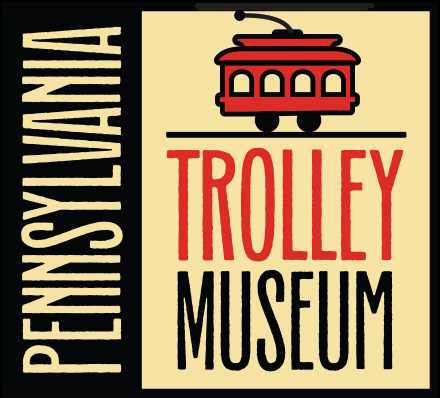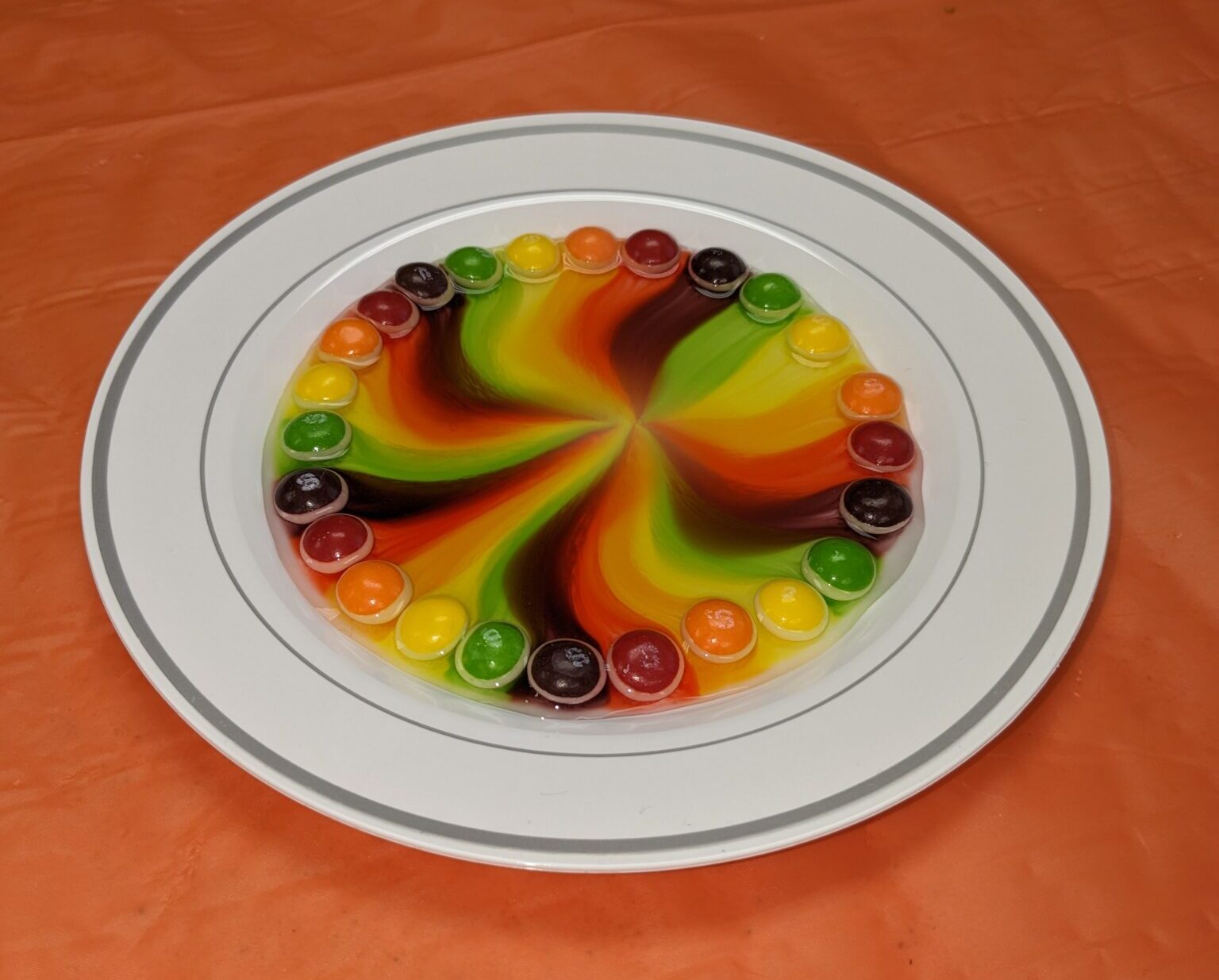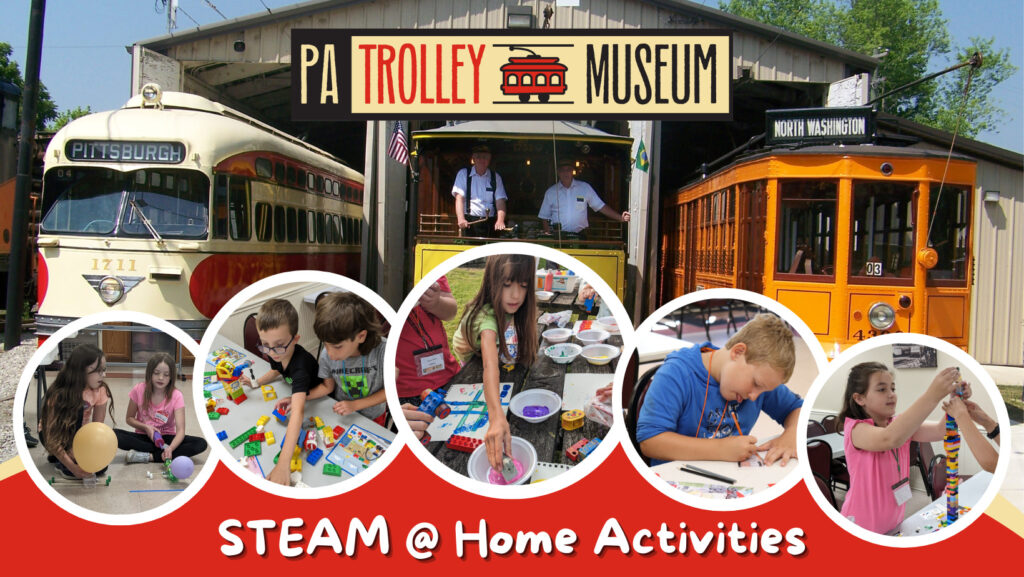 Here’s a spooky, seasonal STEAM-centered activity to do at home with your young scientists who are hungry for science!
Here’s a spooky, seasonal STEAM-centered activity to do at home with your young scientists who are hungry for science!
Activity Time
To conduct this sweet experiment, gather the following materials:
- Skittles
- A sturdy plate or plastic container (we recommend a white plate for the best results)
- Warm water
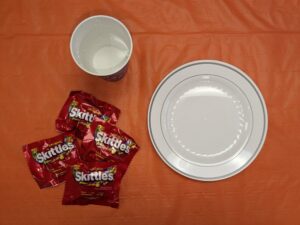
Materials needed for the candy experiment.
Step 1
- Place Skittles into a circle around the middle of the plate. Arrange them in any color or pattern you want, but we recommend alternating colors – at least the first time you give this experiment a go.
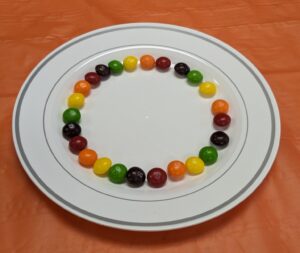
Skittle Experiment – The Set Up
Step 2
- Ask your young scientist: What do they think will happen when warm water is poured onto the plate? Make a prediction, a guess about what they think will happen next.
Step 3
- Carefully pour the warm water into the center of the plate. Add enough water to submerge at least half of the Skittle. Do not add too much water – you don’t want the candy to float away!
Step 4
- Observe the candy and the plate. It will take a few seconds, but watch as the color slowly starts to spread outward from the Skittles and towards the center of the plate.
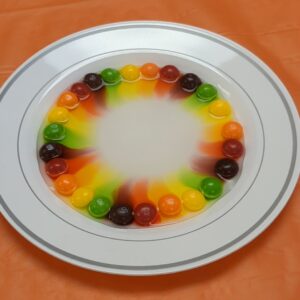
Skittles Experiment
Step 5
- Continue observing until the colors reach the center of the plate.
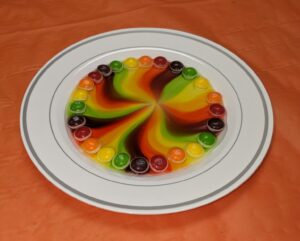
Skittles Experiment – The End Result
Watch a time-lapse of the experiment below!
What’s Happening?
What’s happening in this colorful experiment?
Skittles (and most other colorful candies) are made using sugar and dyes. When warm water is poured onto the plate, the sugars and the dyes that coat the candy begins to dissolve, or mix together with a liquid – in this case, the warm water. The mixture of sugar, dye, and warm water moves towards a spot where there is less sugar and dye. This is why the colorful water starts to move towards the center of the plate. This process is called diffusion, which is the movement of particles from higher concentrated areas to lower concentrated areas in an attempt to equalize, or balance, everything. In our experiment, the sugar and the dyes are the particles that are moving from a higher concentration to a lower concentration.
Why don’t the colors mix together? This is because the same amount of sugar and dye have dissolved into the water from each individual Skittle. They do not mix together because the concentration, or the amount of, sugar and dye dissolved in the water is already equal!
Hungry for more candy science? Visit the museum this upcoming weekend, October 28th and 29th, for Trick or Trolley! Visitors are invited to experience the fall season with rides on trolleys that are outfitted with autumn decorations. Visitors can ride to the Trolley Display building where they can tour the large collection of trolleys. Visitors are encouraged to wear their costumes as children trick or treat at local businesses and organizations stationed throughout the Museum. There will be children’s games and complimentary fall themed refreshments.
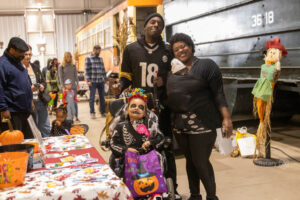
Purchase Tickets Here for Trick or Trolley 2023!
Extension Ideas
Want to keep the experiment going, or use this activity as a science project? Here are some additional activity ideas!
- Will the same thing happen if other candies are used?
- What happens if you use cold water? Really hot water? Make predictions and repeat this experiment with different temperatures of water. Let us know what happens!
- Is water the only liquid that this experiment will work with? What happens if other liquids are used? Make predictions, then carry out even more experiments to see what happens if you repeat this activity using other liquids like milk, vinegar, or lemonade.
- Is a circle the only shape that will work? What other shapes can you try? What about a square? Triangle? A trolley?
If you carry out these experiments at home, we want to hear from you! Feel free to share any pictures of videos of your activity and tag us on social media.
